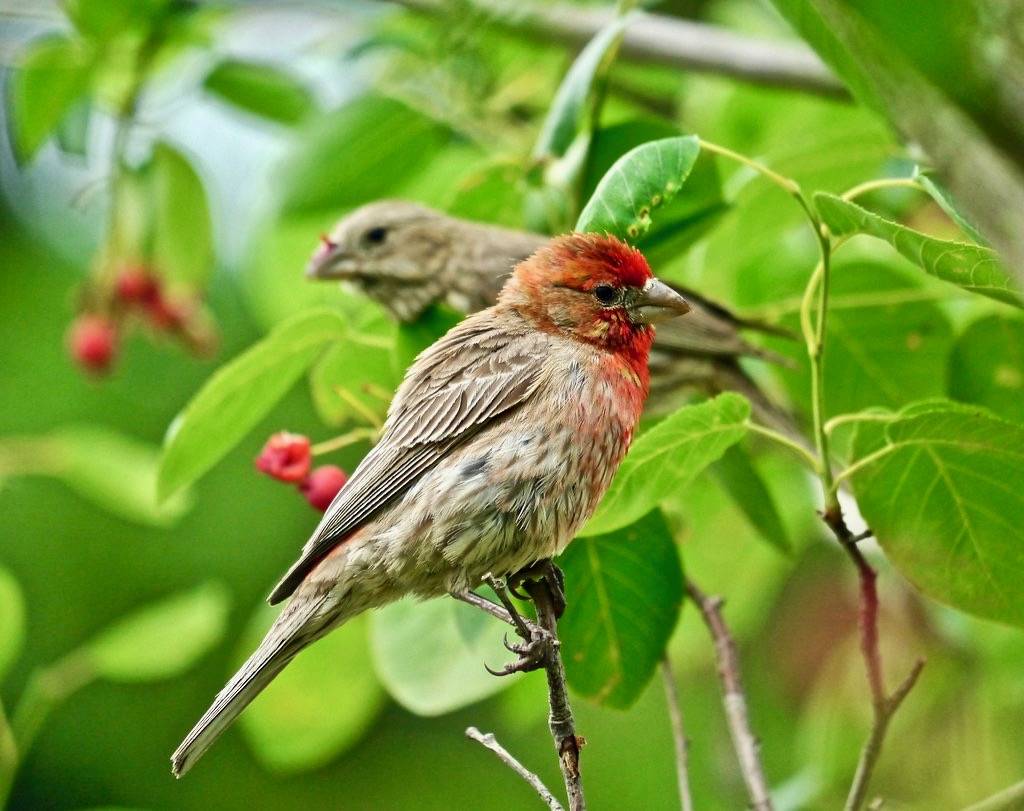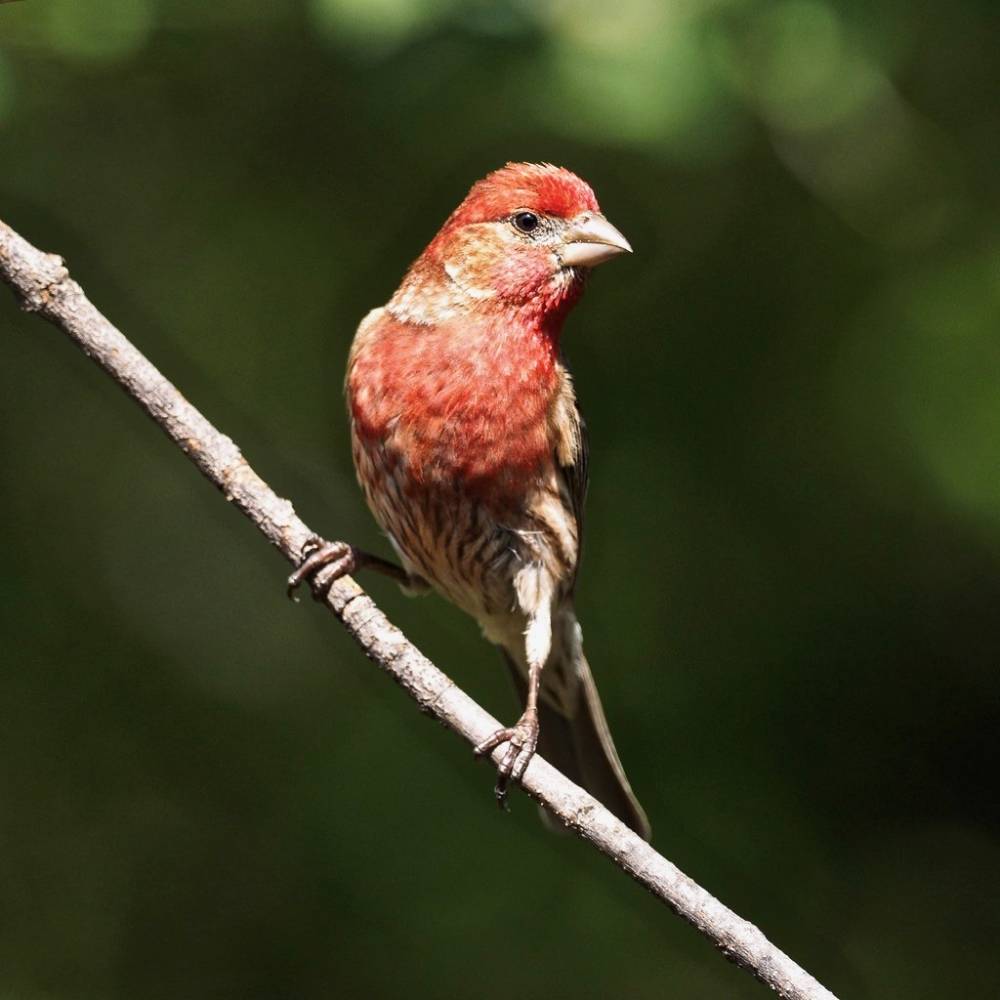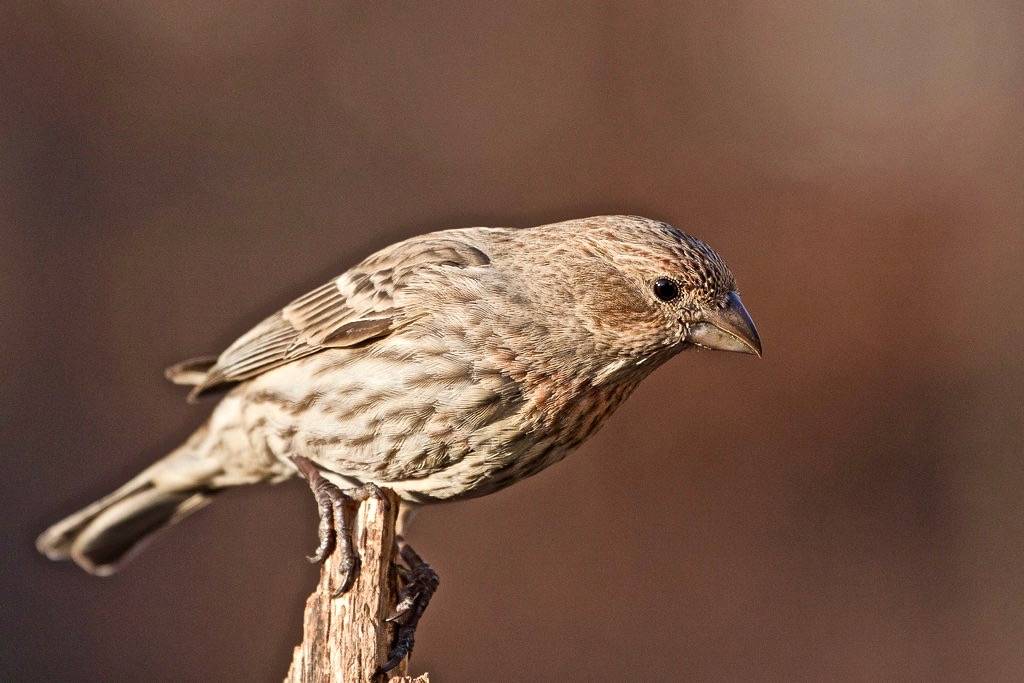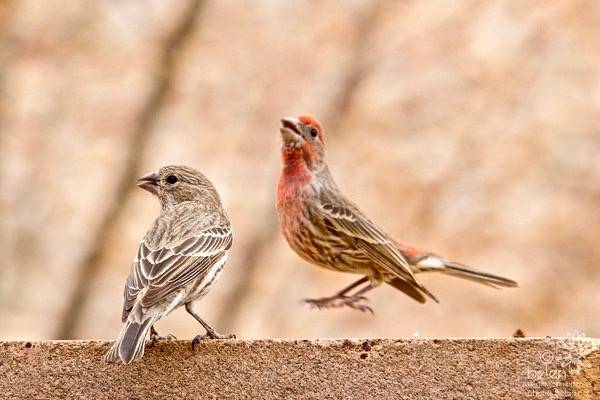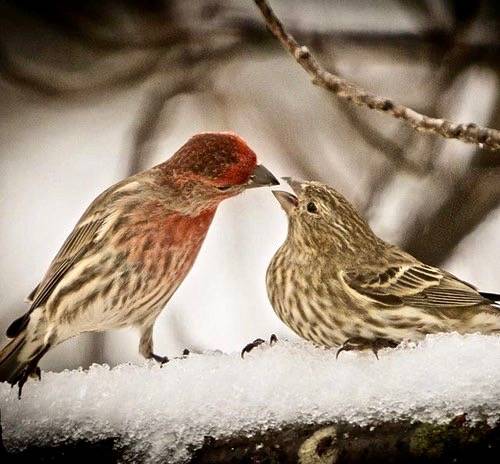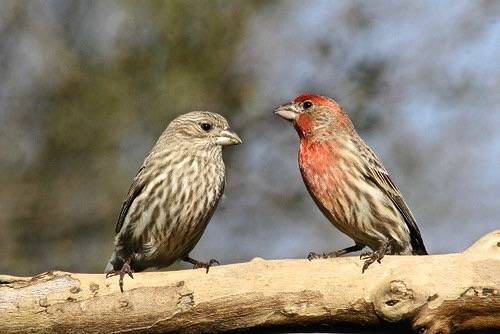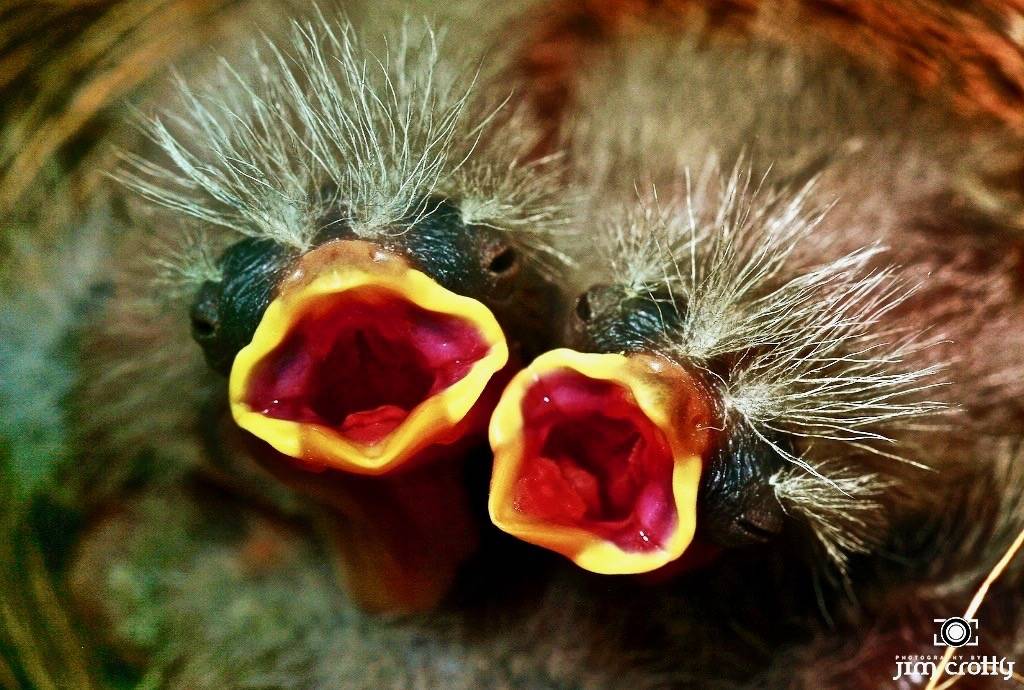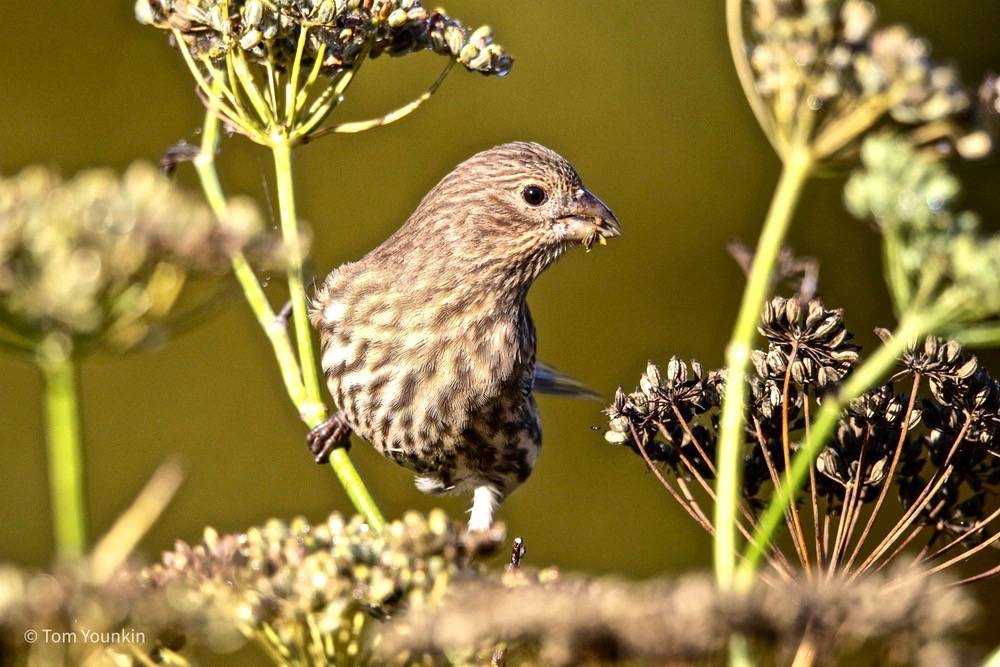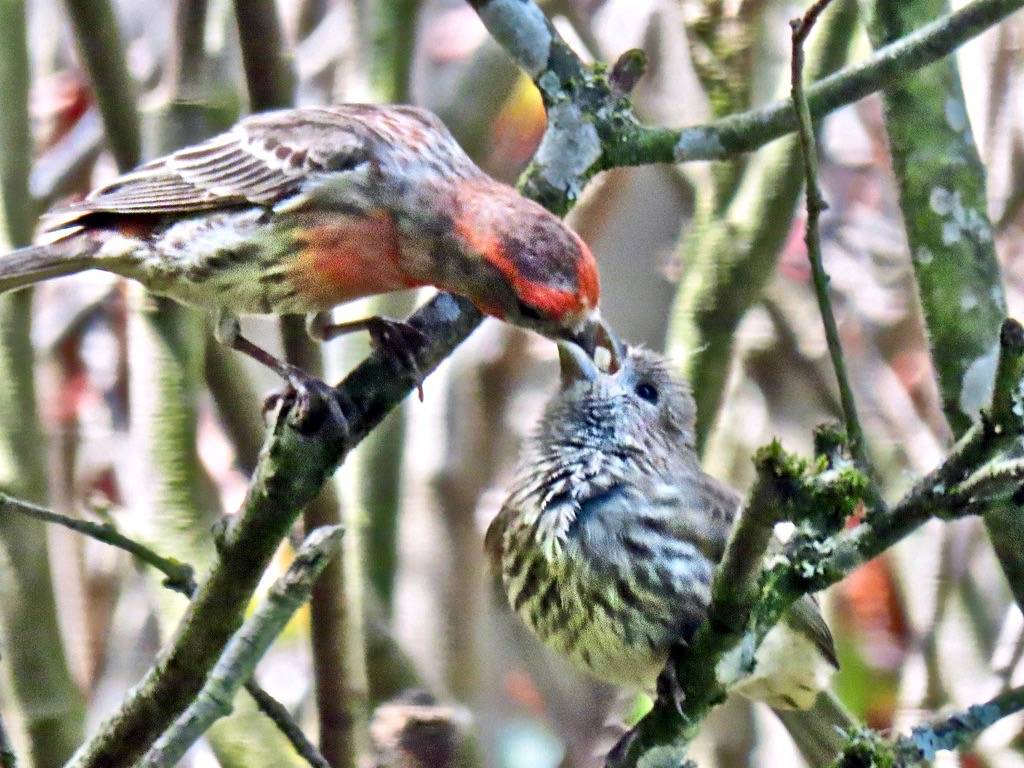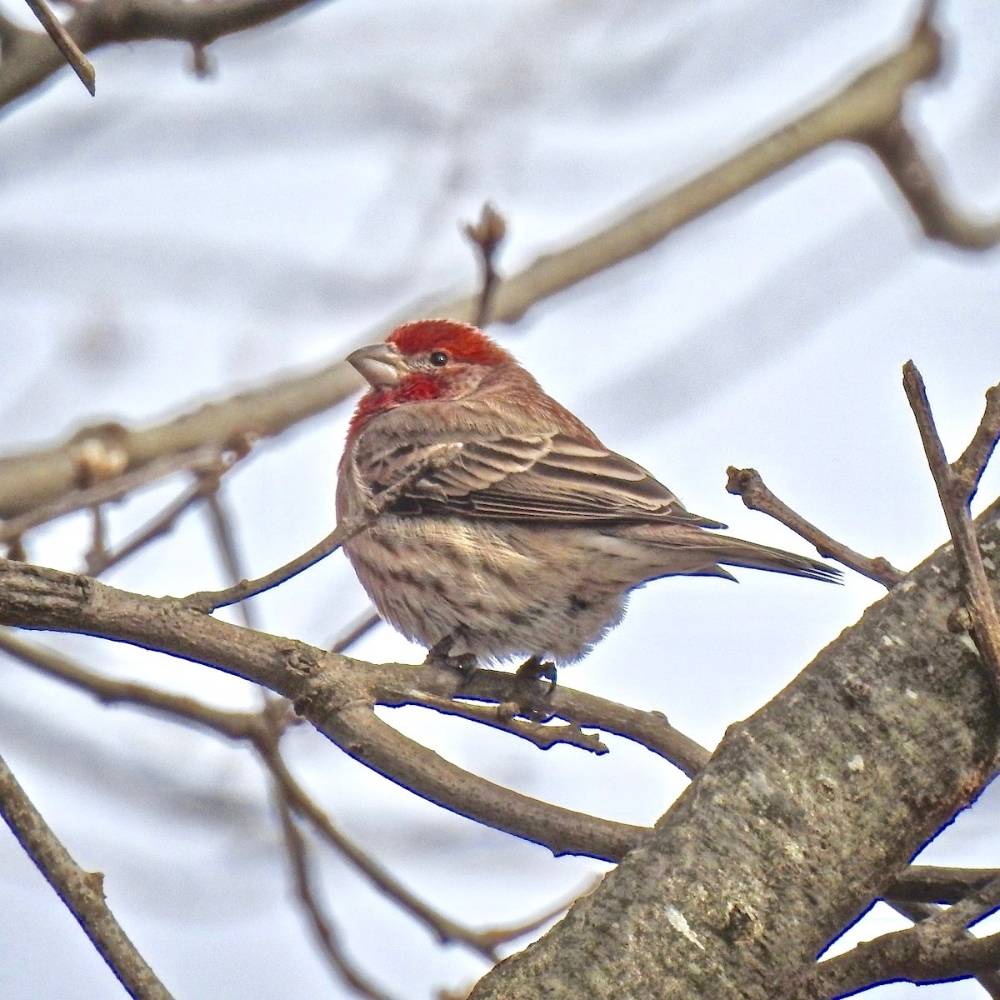House Finch
Although never in great numbers, the House Finch has been recorded at Salter Grove every month of the year. It is often seen in the company of House Sparrows on the edge of shrubbery on Audubon Hill, or foraging for seeds and berries on low vegetation along the Marsh Trail.
The male House Finch truly exemplifies the saying, "you are what you eat." Its head, neck, throat and breast range in color from a pale yellow to bright red. This variation is determined by pigments in the fruits and berries it consumes while molting its feathers.
In contrast, the female House Finch has a drab brown plumage and blurry streaks down the belly. However, studies have shown that a breeding female chooses the reddest male available as a mate presumably because the predominance of red feathers indicates the male is in good health and will be a good provider.
The House Finch is native to Mexico and western North America but was introduced to eastern United States in the 1940's when vendors and owners in New York City released illegally marketed "Hollywood Finches" to avoid prosecution under the Migratory Bird Treaty Act of 1918.
By the 1990's, census data collected at bird feeders documented a westward expansion of the House Finch from the east coast to the Mississippi River. It has adapted well to urban and suburban habitats over much of North America and in some areas has displaced the native Purple Finch and even the naturalized House Sparrow.
Unlike many other small birds, the House Finch is impervious to brood parasitism by the Brown-headed Cowbird. This is because its young are fed exclusively plant material. Many insectivorous songbirds fail to produce their own young because juvenile cowbirds monopolize the insect food brought by foster parents to feed their own nestlings. Cowbird eggs in a House Finch nest may hatch but hatchlings are invariably doomed to starvation on a strict diet of seeds and berries.
For more information:
https://www.allaboutbirds.org/guide/House_FInsch
https://www.audubon.org/field-guide/bird/house-finch
http://www.biokids.umich.edu/critters/Carpodacus_mexicanus/
https://en.wikipedia.org/wiki/House_finch
https://medium.com/the-scope-yale-scientific-magazines-online-blog/why-brighter-is-better-for-male-house-finches-aacb146c5379
https://www.birdsbybent.com////ch41-50/houfinch.html

